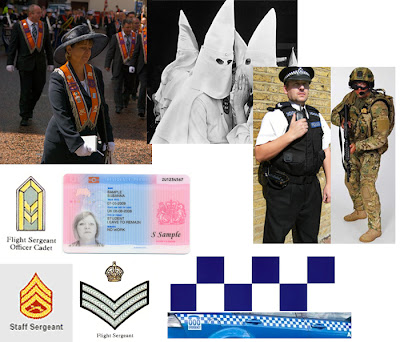So for a while the thought process ended up going off in a tangent and then grinding to a halt.
I started to think into a broader scope on character design, what makes characters how they look, what is it that sets design rules in place.
I began ask questions like, what was stopping the Master Chief being 5ft 7 instead of being 7ft 7? Why can't Link be right-handed instead of left? Why do wolverines claws come from his knuckles, why not his fingers?
From here I recognized that the most interesting fictional characters live in rich, in-depth worlds with massive scope. These worlds have their own governments, their own military, their own pharmaceutical companies, even their own household brands. And these worlds have rules which designs need to consider and follow.
So my issue was how can we create and interesting character visually if we know nothing about them and the world they live in?
In a genre I found interesting enough to explore I wrote up a concept comprised specifically with adjectives, describing words that would bring back broader and more interesting results when used in visual research rather than searching for specific things for inspiration.
In a previous post I talked about cause and effect in design, so drawing from the idea I've used opposing adjectives to add depth and visual contrast.

Here i've branched off into themes I would like to look at, where when combining them with adjectives in my central concept come back with some interesting results. As well as other results, a particularly good example that came back was 'Aggressive Architecture'.
Congested Architecture
Aggressive Architecture
So from the perspective of the city (insert name here..) citizens, this seemingly green and positive government and it's ideals are unwanted ones. The city and it's people feel incredibly oppressed by this overbearing force of law.
I wanted this government to portray themselves as the height of civilization and appear to consider themselves above the people.
So with the words 'above' and 'overbearing' I thought about how I could show this quite literaly.
I liked the idea that as this Government has gradually occupied the 'industrial city' over the years that government-related places and buildings are literally built above street level and above the citizens. This could be for a number of reasons-
As pollution settles from the citys heavilly-industrial factories and power plants, the safest level of clean-breathable air reside mid high, below where pollution rises into the air, and above the common dirty and often dangerous street level. This provides a safer haven for Government citizens and officials.
Another reason is that with government buildings out of reach from the street level, it has become easier to monitor people below them via camera. All in all this re-enforces their image that they are literally and metaphorically 'Above the People'.
Environments aren't really my thing but I mentioned before that by this point I had gone off in a big tangent.
So I drew up two outdoor-ish alleyways in the city, one that would solely occupied by city citizens and the other in the vicinity of a government building.
Typically, both corridors will show vast contrast that best represent either side, however the point I wanted to specifically draw attention to were the roofs. Continuing on the idea that government buildings are primarily above the streets and monitoring activity down below (via whichever media, lets say cameras for now) all ground level government architecture will sport glass or open roofs, while on the other had, city citizens try keeping the watchful government eye out by blocking out the roofs with sheets of plastic, planks of wood, general scrap, and leave warning signs depicting eyes and arrows pointing upward for others to be wary of.
So yes, rather large tangent and a half. But on the other hand, by looking into designing a world for these characters I am going to concept I have created design rules that the characters need to follow.
So next step.
































